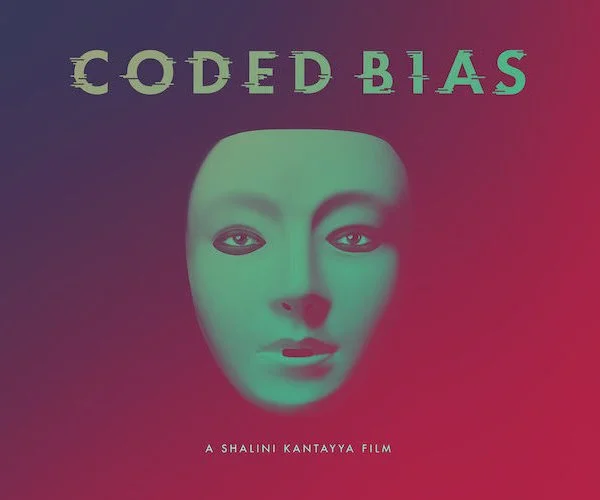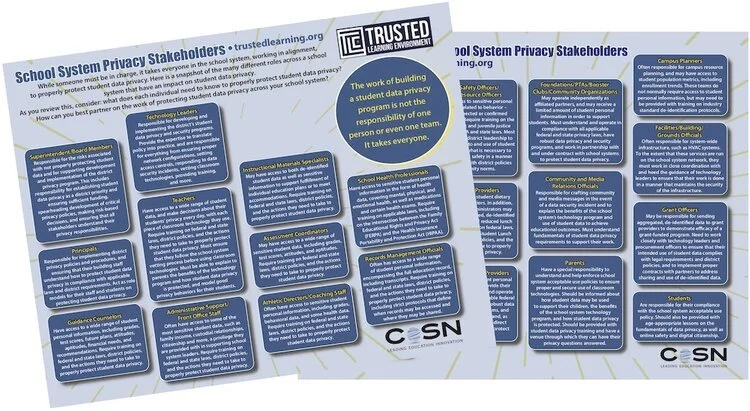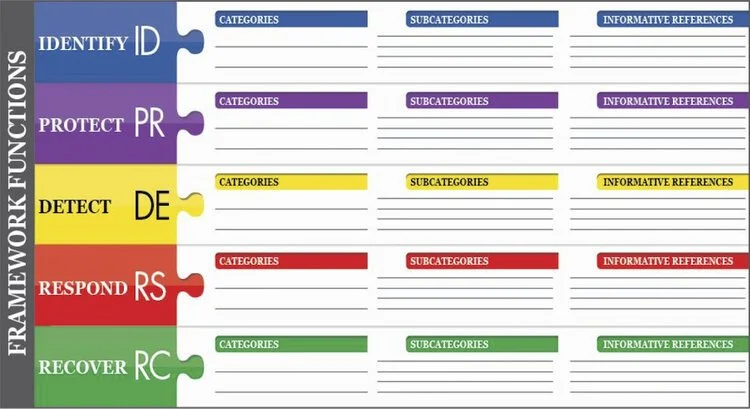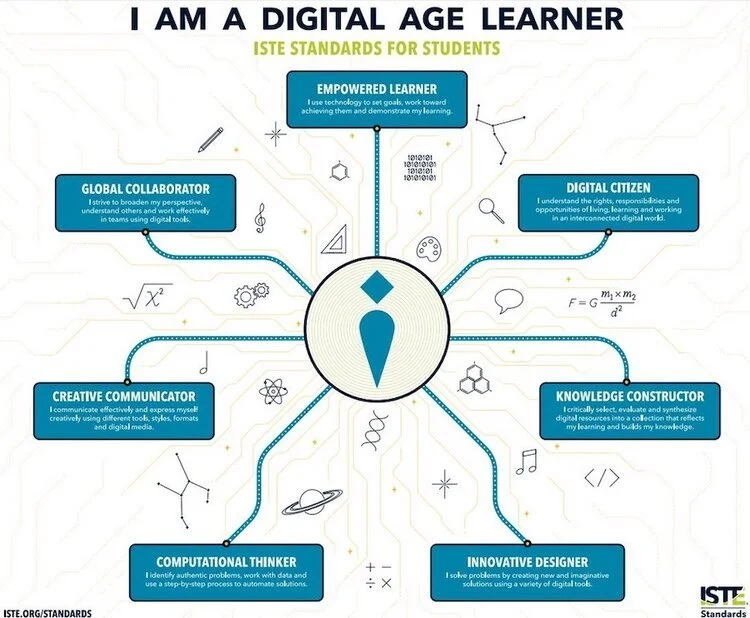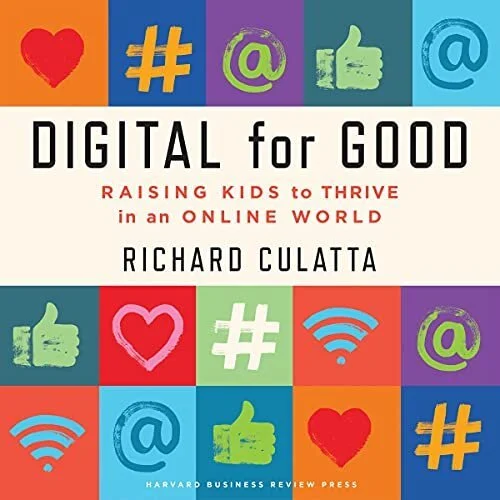Digital literacies: the second digital spool of educational justice
Spools by PublicDomainPictures from Pixabay
Guest article by Mary Lang
Digital Literacy Comes To The Fore As Digital Illiteracies Are Declared A Public Health Crisis
In the months since the first installment of this series[1], a funding sea change and a mindset shift, have occurred in two of the three digital spools in K-12 education (digital equity, digital literacies and digital epistemology) explored in this series.
1. Funding for digital equity flipped the conversation
In the first half of 2021, the dialogue about the connectivity mandate for digital equity instantly flipped from how to secure funds to how to spend funds. Decades of advocacy work paid off as the confluence of the COVID19 pandemic’s “Fast Forward” button in education, a new FCC Acting Chairwoman, and digital equity legislation came together in never-before-seen levels of funding for digital equity. The House Passed $1.9 Trillion Stimulus, including support for a $7 billion+ Emergency Educational Connections Act, to help close the Digital Divide and Homework Gap.
The three spools of educational justice
This is the second installment in a 3-part series on the dominant digital dimensions or “digital spools” of K-12 educational justice: digital equity (February 2021), digital literacies (September 2021) and digital epistemology (May 2024)
Image by Clker-Free-Vector-Images from Pixabay
2. Mindsets about digital literacies are poised to shift
In the second half of 2021, digital literacies are poised to be the next dimension of educational justice to experience a sea change. Building on decades of debate and advocacy work, signals point to a new movement in how digital literacies are viewed, taught and practiced. In addition to the popularity of media focused on digital justice issues[2], a harbinger of a new digital literacies dialogue arrived in July 2021.
3. It’s official: digital illiteracies are a public health crisis
On July 15, 2021, for the first time in U.S. history, a U.S. Surgeon General, Dr. Vivek Murthy, formally declared that misinformation is an urgent threat to public health. Driven by the devastating public health impacts of digital illiteracies during the COVID-19 pandemic – where health misinformation spread at unprecedented speed and scale, especially online, Dr. Murthy’s declaration was powerful and resulted in rapid response; among others, the Rockefeller Foundation immediately committed $13.5 million to counter “confusing, inaccurate, and harmful information that spreads at an unprecedented speed and scale and threatens the health and wellbeing of communities around the world.”
Harbinger of Hope: Digital Literacies are a Compass
Educators have discussed “digital literacy” for years, but the new reality is that there is no single digital literacy. To become conversant digital linguists, students must learn to navigate multiple digital literacies to create a healthy information environment.
Just as the spool of digital equity is about three dimensions of connection (technological, human and learning connections), the spool of digital literacies concerns the three dimensions needed to navigate those connections (safety, data, and context). Digital equity is an onramp to opportunity and digital literacies the compass to navigate those opportunities on the path to educational justice.
Coded Bias: this documentary investigates the bias in algorithms and facial recognition software and was part of the signal swarm pointing to a new dialogue around digital justice[3]
Safety: The first digital literacy
The first dimension - digital safety - has two prongs: student safety and school safety.
Technology moves at a pace that requires constant calibration in how we think about both student and school safety. Safety today is not the safety of even five years ago. The administrative aspects of student web safety such as “change your password frequently,” have become common practice.
Because our students are digital natives, they are assumed to have instinctive high-level information-seeking and interpreting skills. There is an assumption that all young people are a new breed of fluent digital linguists. They are not.
“The common assumption that young people are sophisticated users of technologies for locating information is not grounded in empirical evidence…” –Leanne Bowler, Professor, Pratt Institute
Today’s digital literacies challenge is not to establish, surveil and enforce rules, but to help students help themselves as empowered thinkers with navigational savvy. There is no set of rules, and no checklist that can compete with the hyper- dynamic reality of life online for our students. Especially as lines blur between academic and personal life online for our children.[4]
Common Sense Media’s approach to this first prong of the digital literacy of safety is to help students build the critical-thinking skills and habits of mind to navigate the dilemmas they encounter.[5]
Empowering students with strong habits of mind is the correct approach. As early as possible, students must learn the literacy of digital safety. As soon as a student begins to use any type of digital connection tool, including (perhaps especially) cell phones, PK-12 educators should be building the student’s digital safety muscle. Critical thinking and navigational habits of mind will build that muscle, empowering students with the confidence that they can keep themselves safe.
A school’s digital safety has become a primary concern for education leaders. In today’s sophisticated digital web, the speed, breadth and depth of cyber threats of all types have left thousands of organizations and cyber experts ‘barely able to keep up’. K-12 schools have not been immune.
The K-12 Security Information Exchange has reported that cyberattacks against K-12 schools rose 18% in 2020.
Cybersecurity topped the Consortium of School Networking’s (CoSN) 2021 Annual Leadership Report. The report revealed that 77% of school districts operate without a full-time employee dedicated to network security. Cybersecurity is no longer the domain of only dedicated technical staff, as parents and school district officials struggle to come to terms with a unified approach to deal with ransomware attacks and demands.
A safety-first approach to this literacy starts with data privacy leadership across many stakeholders. The infographic above lays out twenty-four school system privacy stakeholders.
The Consortium for School Networking (CoSN) has also created The Trusted Learning Environment (TLE) Seal Program as the nation’s only data privacy framework for school systems. The TLE program focuses on building a culture of trust and transparency.
TOOLS: We’re including a few tools through this article – be sure to click through and to utilize them in your work!
Tool #1 – Common Sense Media’s K-12 Internet Safety Lesson Plans
The K-12 Cyber Incident Map: Cybersecurity-related incidents in U.S. K-12 public schools and districts. Image owner: Mr. Doug Levin.
Developing a baseline culture of data privacy and a trusted learning environment across broad stakeholder groups, sets the stage for building a robust cybersecurity infrastructure to protect school safety.
A layered approach should place data safety, cybersecurity infrastructures, and ransomware risk management at the strategic level for school districts.
School districts must prioritize their cybersecurity strategy. Cybersecurity breaches and ransomware events can become the digital equivalent of a human virus pandemic, shutting down schools and learning overnight.
A good place to start is with the Framework for Improving Critical Infrastructure Cybersecurity Version 1.1 National Institute of Standards and Technology (NIST). This foundational framework from 2018 was augmented in June, 2021 with NIST’s preliminary report on a Cybersecurity Framework Profile for Ransomware Risk Management.
NIST’s June, 2021 Ransomware Profile can be used as a guide to managing the risk of ransomware events. The Ransomware Profile maps security objectives from the Cybersecurity Framework to security capabilities and measures that support preventing, responding to, and recovering from ransomware events. The Profile can help to gauge an organization's level of readiness to react to the impacts of ransomware events.[6]
The K-12 Cybersecurity Resource Center also offers a free online cybersecurity school self-assessment based on the NIST framework.
Tool #2 – School System Privacy Stakeholders infographic
Data: The second digital literacy
Data is the digital literacy that can empower students to use data for good to change the world.
Today, data is the digital literacy most foundational to digital context. It is the digital literacy that may define which of our students will be future ready in terms college entrance success and professional futures.
Here in Los Angeles, an innovative partnership between UCLA and LAUSD, funded by the National Science Foundation, Mathematics and Science Partnership grant, "MOBILIZE: Mobilizing for Innovative Computer Science Teaching and Learning,” developed a barrier-breaking Introduction to Data Science (ISD) curriculum. The ISD curriculum teaches students to think creatively, constructively, and critically about the role of data in science and in everyday life. This is what they will need to use data for good to change the world.
One barrier-breaking aspect of the curriculum is that mobile devices are used not as gimmicks to capture students' attention, but as legitimate tools that bring scientific enquiry into their everyday lives, as tools of participatory sensing. Students use their mobile devices to collect and share data about their community and their lives, and analyze these data to gain a greater understanding about their world.
First implemented in 2014 as a pilot program with 10 LAUSD mathematics teachers, ISD has grown to 30+ schools in seven Southern California public school districts, serving over 4,000 students and counting. The Introduction to Data Science (ISD) curriculum is available to all at no cost.
Suyen Machado, the Los Angeles math specialist who helped write the IDS curriculum, said it offers students a chance to see how they can harness math to make change in the world, even if they don’t think of themselves as “math people.”
❝Students can create projects that facilitate civic engagement. They can use data to question what they’re hearing, to see that data empowers.❞ –Suyan Machado
Data across the curriculum (DAC) is becoming the 21st century pedagogical sister to the writing across the curriculum (WAC) movement from earlier centuries.Even without adopting a full new curriculum there are many options for schools to incorporate data literacy for youth as they work to achieve educational justice.
Tool #4 – Watch this short introduction video and start using New York Times graphs in your classroom for digital literacy.
What’s Going On in This Graph?, curated by the New York Times, is one such resource. This resource meets students where they live today and offers compelling visuals, popular culture topics, all swimming in voluminous, hard-to-tame data.
Students are invited into the world of data with visualizations of interest to youth, including popular songs, common high school sports injuries, and comparative analysis of the socio-economic impacts on student success. Students are invited to relate to data with questions such as: What do you notice? What do you wonder? What impact does this have on you and your community?
Context: The third digital literacy
Context–the information we need to fully understand, evaluate or interpret ideas–is the most essential digital literacy. Context develops the insight students will need to grasp the intersectional conditions that contribute to their full understanding of all types of information. Especially now, when understanding can be fast and shallow based on web surfing behavior, we must demand that students be equipped and empowered to fully understand context as they navigate the flood of information they confront daily.
In practical terms, a good starting point for helping students develop the digital literacy of context is the Digital Age Learner Standards for students from the International Society for Technology in Education (ISTE). ISTE offers many resources for parents, teachers, and students working to navigate digital connections and develop the literacy of context.
ITSE’s President, Richard Culatta’s recent book, Digital for Good, takes a navigational approach, weaving together the three digital literacies of safety, data, and context. Culatta offers a positive pathway to digital well-being focused on the personal qualities of balance, staying informed, being inclusive, being engaged and staying alert.
Los Angeles Unified School District commitment to digital literacies
Locally, the country’s second largest school district, Los Angeles Unified School District (LAUSD) showed bold commitment to digital literacies. In March, 2021 LAUSD unanimously passed a resolution to introduce Critical Media Literacy instruction, to help students learn to determine fact from fiction. This comes at a time when many students depend solely on social media or one-sided sources for information. Critical Media Literacy instruction is set to begin with the 2021-22 school year.
The resolution’s sponsor, Board member Jackie Goldberg recognized that “Bombarded by misinformation posing as fact on social media, television, radio, and in publications, our students need to use their critical thinking skills to determine what to believe.” Board Member Goldberg was joined by fellow Board Members Scott M. Schmerelson and Nick Melvoin as co-sponsors and garnered the unanimous support from Board President Kelly Gonez, and fellow Board Members Dr. George J. McKenna III, Monica Garcia and Tanya Ortiz Franklin.
Digital equity and literacy work is not new. What is new is that both reached an inflection point moment in 2021. Inflection point moments are critical in determining an idea’s trajectory and ability to scale up from moment to movement, when it will count the most.
How does a moment turn into a movement?
Moments morph into movements when an idea begins to ride waves of understanding, enjoys surges of engagement, experiences tangible adoption and receives meaningful endorsements across a variety of stakeholder groups and multilevel systems.
We saw this happen with digital equity in the first half of 2021, resulting in an unprecedented level of funding and energy behind this defining educational right for K-12 students.
We are now seeing it happen with digital literacies, the second digital dimension of educational justice.
Understanding, engagement, adoption and endorsement are now coalescing for digital literacies.
From local groundswells like the Critical Media Literacy campaign in Los Angeles at LAUSD, to new levels of popular awareness across all media platforms, to a first time endorsement connecting digital literacies to public health by the US Surgeon General, we are watching digital literacies morph into a powerful movement.
Educational Justice will be Powered by Digital. Digital equity is now a full-on movement. Digital literacies are next.
Technology does not define education, and we need to leave the debate over human vs. tech in education behind. It never was, or ever will be, an either/or debate. It has always been, and will continue to be, about solutions that are human first, yet welcoming to the technology that can propel equitable futures. We will leave our most vulnerable students behind if we fail to recognize the digital imperative that will fuel educational justice.
Educational justice[7] means education for all and for each, with the guiding principle that all students should receive the education they deserve. Every student deserves an education that equitably equips and empowers them to realize their greatest potential in ways relevant to their world.[8]
Digital is the dividing line between perpetuating educational inequity and realizing educational justice. Unaddressed, this dividing line will only widen with time. As public education strives to build back better from the lessons of the 2020 COVID19 pandemic, digital demands an increasingly serious focus in public education.
Achieving educational justice requires broad embrace of digital issues across the entire education ecosystem. The practice of putting anything “tech” into the purview of traditional technology departments should end. This practice maroons digital issues, when instead they must become central to all consequential educational debates and decisions.
Whatever the normal next may be, and the perpetual next and next and next beyond that, a defining engine of educational justice will be digital.
About the author
Mary Lang works to contribute to progress toward educational justice. Currently Mary serves as the Organizational Change Management Officer for the Los Angeles County Office of Education. Previously Ms. Lang taught in public and private universities and designed socio-technical transitions across all sectors.
The views expressed here are solely those of the author.
[2] The first half of 2021 saw a new phase of public awareness in artificial intelligence (AI). A number of popular books, films, mainstream news coverage, and broadcasted public hearings all released in the first half of 2021, focused on the role of AI in perpetuating mis- and disinformation and inequity. This swarm of focus on digital justice reached audiences beyond tech-only audiences.
[3] Coded Bias is a documentary released in March 2021, that investigates the bias in algorithms after M.I.T. Media Lab researcher Joy Buolamwini uncovered flaws in facial recognition technology. The film enjoyed critical acclaim, broad appeal and is now available on streaming giant, Netflix.
[4] Professor Leanne Bowler of the Pratt Institute specializes in information-seeking behaviors of youth. Her quote here is from her 2018 paper, Exploring Youth Information-Seeking Behaviour and Mobile Technologies Through a Secondary Analysis of Qualitative Data.
[5] Help Kids Practice Safe Internet Habits and Stay Safe Online, Common Sense Media.
[6] Preliminary Draft NISTIR 8374 Cybersecurity Framework Profile for Ransomware Risk Management
[7] In this series, the principle of equity is envisioned as both an outcome and a process. The outcome of educational justice is examined through the lens of digital processes of equity. The growing influence of the digital dimension of equity in K-12 education cannot be overstated and this series focuses on that digital dimension.
[8] Joseph Levitan discusses what it means to receive a just education in the American Journal of Education.



